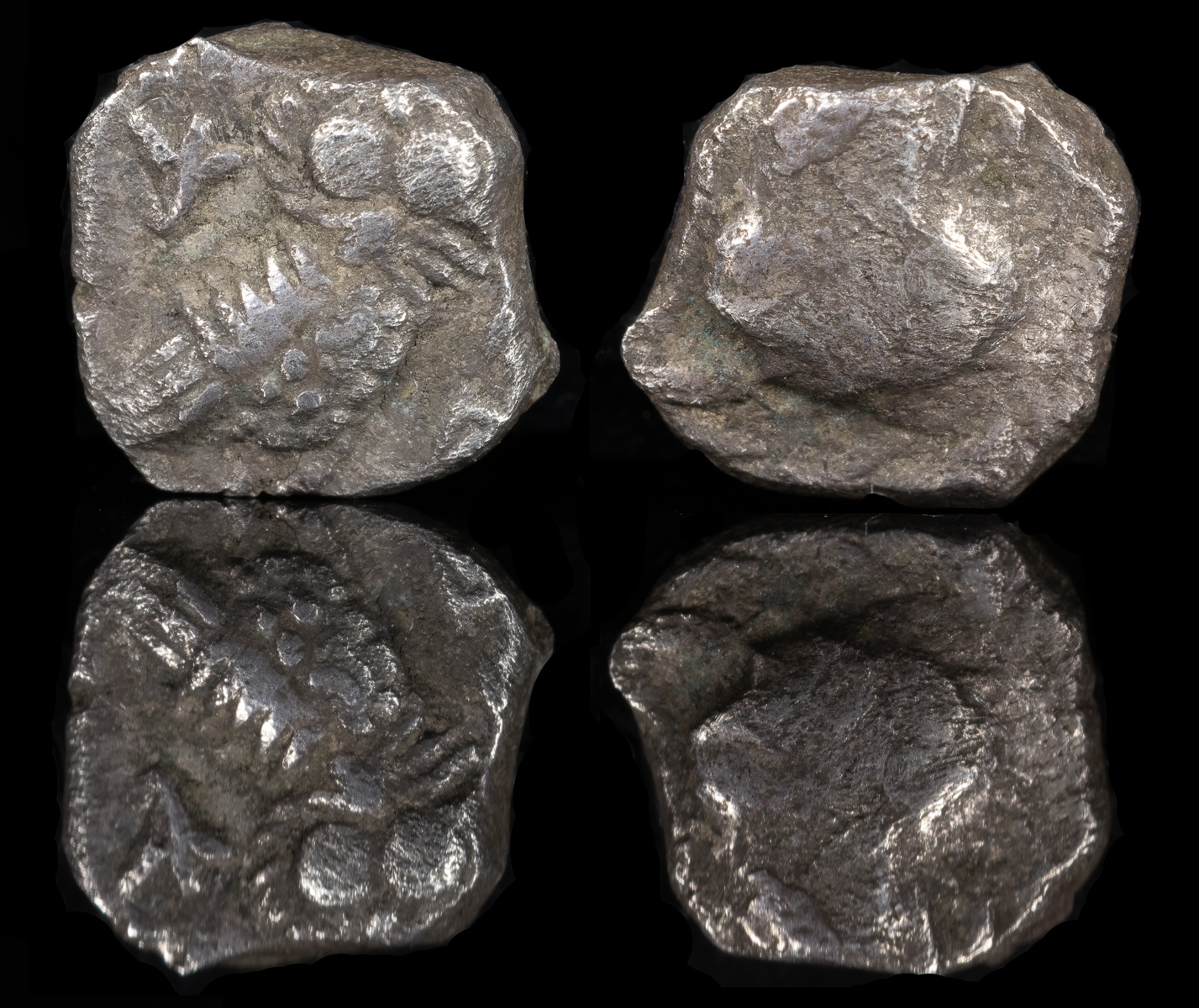
JUDAEA, Achaemenid Province (Yehud)
AR Gerah 7.2mm, 0.6g
Circa 375-332 BCE.
Helmeted head of Athena right / Owl standing right, head facing; lily and crescent to left, YHD (in Phoenician) to right.
MCP YHD .Hendin 1050; cf. HGC 10, 435
Ex Holyland Ancient Coins
This coin from Yehud evokes a lot of imagination, since Yehud was the kingdom that included Jerusalem. A tremendous amount of scholarship has occurred concerning the history and politics of this Persian-controlled kingdom, and properly summarizing them would take an entire book.
Jerusalem was considerably smaller back then, with an estimated 1500 people, and the rest of the small population of Yehud was mostly rural. Its area was also smaller than the previous Kingdom of Judah, but it was given some independence by the Persians and was allowed to mint its own coins, as seen here.
These were very small coins and were obviously intended for local use. Given that they imitate the Athenian owls, one can presume that their tets dominated for higher currencies. Aramaic was the principal language and is what is used for the legend on this coin.
The kingdom itself was rules by priests, one of whom minted his own coins (Hezekiah). The kingdom was predominantly Jewish, though the Jewish religion was notably different than today.
Hiram I of Tyre aids in the construction of Solomon’s Temple in Jerusalem.
The United Monarchy of the Israelites splits and Gaza becomes part of the Kingdom of Judah.
King Mesha of Moab references Edom in the Mesha Stele as an established neighboring kingdom, often involved in regional conflicts with Israel, Judah, and Moab.
Nebuchadnezzar II captures Jerusalem, leading to the Babylonian Captivity of the Jews.
Following the Babylonian conquest of Jerusalem, Edomites are said to have supported Babylon, leading to tensions with the Jews who flee southward. Many Edomites settle in the Negev.
Judea, including Edom, becomes a Roman province. Caesarea Maritima replaces Jerusalem as the capital.
July
Vespasian has control over all of Judea except Jerusalem.
July 1
Soldiers in Judea proclaim Vespasian Emperor.
April
The Roman army under Titus begins the Siege of Jerusalem.
August 30
The Roman army under Titus overwhelms the defenders of Jerusalem and sets fire to the Temple.
Berenice, the sister of the Judean king Agrippa II, moves in with Titus as his promised wife. He sends her away after an uproar.
Julian II allows Jews to rebuild their temple in Jerusalem, but fires break out that stop the project.
August 22
The author and his wife visit Jerusalem.